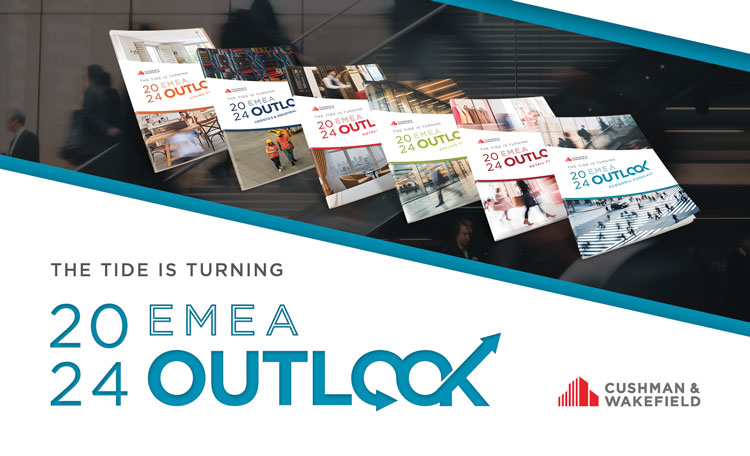
Commercial Real Estate Insights
Most Recent

Research • Valuation
Valuation & Advisory Industrial Investor Survey

MarketBeat
Article
John McWilliams • 4/15/2024
Research • Workplace
Audrey Giguere • 3/27/2024
Healthcare

Research
Research • Investment / Capital Markets
Jacob Albers • 5/19/2023
Hospitality

Research • Valuation
U.S. Lodging Overview – Year-End 2023
Inflation & Interest Rates
Industrial & Logistics

Research • Valuation
Valuation & Advisory Industrial Investor Survey

MarketBeat
Research
Jason Price • 3/14/2024
Article
Eric Messer • 3/11/2024
Office

MarketBeat

Research • Workplace
Experience per Square Foot Instant Insights
Research • Workplace
Audrey Giguere • 3/27/2024
Research • Workplace
David Smith • 1/30/2024
Investor

Article • Investment / Capital Markets
Deciphering Today’s Debt Market

Article • Investment / Capital Markets
Market Matters: Exploring Real Estate Investment Conditions & Trends
Research • Investment / Capital Markets
Sam Tenenbaum • 2/7/2024
Research • Investment / Capital Markets
David Hoebbel • 1/22/2024
MarketBeats

MarketBeat

MarketBeat
Multifamily

Research • Investment / Capital Markets
Top Trends Across Cushman & Wakefield’s Multifamily Portfolio
Retail

Research
Main Streets Across the World 2023

Research • Workplace
From Putt to Pint: Everyone Wins with Competitive Socializing
Article • Financial Services
John McWilliams • 12/11/2023
Sustainability & Wellness

Research • Sustainability / ESG

Research • Sustainability / ESG
Article • Sustainability / ESG
Jack Pufunt • 9/20/2023
Article • Sustainability / ESG
Jack Pufunt • 8/22/2023
Technology

Podcast • Technology
Data, People and Technology: Unlocking Better Decisions in CRE

Research • Technology
From AI to Absorption: Office Demand, AI Talent Concentrations, and What it Means for Data Centers
Insights • Technology
Vivek Dahiya • 10/31/2023
Podcast • Technology
Michael Creamer • 10/3/2023
Podcast • Technology
Michael Creamer • 5/16/2023
Article • Technology
Robert Sammons • 11/18/2022
The Edge Magazine

Research • Technology
The Electric Vehicle Revolution
Insights in your inbox
FEATURED MARKETBEAT REPORTS

MarketBeat

MarketBeat

MarketBeat

MarketBeat
























































